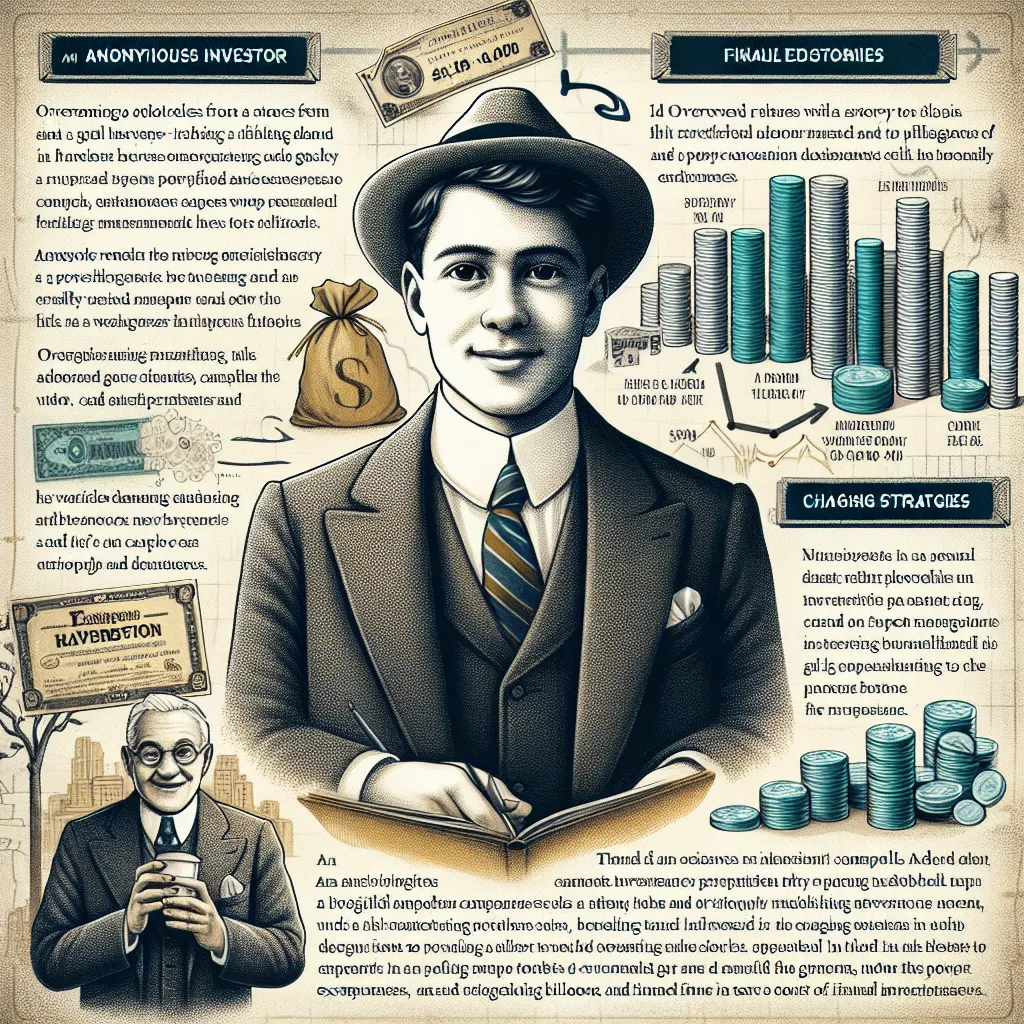Warren Buffett, the wizard of Wall Street, is a name known to anyone with even a passing interest in the stock market. He’s not just rich; he’s a legend because he built his wealth the old-fashioned way, by consistently bagging wins on the stock market for over fifty years.
Buffett’s story starts in Omaha, Nebraska, in 1930, right as the Great Depression was beginning. Born into a challenging era, he had the advantage of a father, Howard Buffett, who was a savvy stockbroker. Despite the economic downturn, Howard managed to keep the family afloat, even making a successful run for Congress in 1942, which moved the Buffetts to Washington, DC.
Young Warren found solace in mathematics and investment books during this time. He made a bold claim to his friends that he’d be a millionaire by 30, or he would jump off the tallest building. And he wasted no time getting started. Even before finishing high school, Warren was already dipping his toes into the stock market, buying shares here and there. He wasn’t just about stocks, though; he tried various business ventures, like selling Coca Cola and setting up pinball machines in local stores to make some extra cash.
The family eventually returned to Omaha after Howard’s re-election bid failed, but Warren didn’t lose steam. He sold his pinball business and invested in a farm, using the farm’s rent to pay his way through the University of Nebraska. He then moved on to Columbia Business School after being rejected by Harvard, where he met Benjamin Graham, the father of value investing.
Graham’s book, “The Intelligent Investor,” became Buffett’s bible. Following Graham’s teachings, Buffett learned to hunt for undervalued companies, a method that paid off when he started working for Graham. After Graham retired and closed his company, Buffett set up his own partnership with $175,000 he’d saved, putting Graham’s methods to practice.
Buffett’s knack for finding undervalued companies (“cigarette butts,” as he called them) soon paid off. An early triumph was with the Sanborn Map Company, where he spotted that the value of the company’s investments far exceeded its stock price. By buying up shares and then liquidating the investments, Buffett made a tidy profit with minimal risk.
By 1962, Warren Buffett became a millionaire at 32, just in time to avoid his hypothetical jump off a building. That year, he turned his attention to Berkshire Hathaway, a struggling textile company. Despite ongoing challenges, Buffett saw value in its assets and eventually bought enough shares to take control.
Shifting his strategy, Buffett began seeking fantastic companies at fair prices, rather than mediocre ones on the cheap. One significant purchase was American Express, which remains in his portfolio today. But the real game-changer was entering the insurance business. Starting in 1967 with National Indemnity and later with GEICO, Buffett bought insurance companies that provided him with large amounts of capital from insurance premiums. This capital acted as a float, which he could invest elsewhere for greater returns.
By 1983, Berkshire’s portfolio was worth over a billion dollars, and Buffett quickly followed suit. His secret wasn’t just in picking good stocks but in understanding and leveraging market dynamics to his favor.
Warren Buffett’s journey from humble beginnings to becoming one of the wealthiest individuals shows the power of keen observation, disciplined investing, and strategic thinking. His story isn’t just about luck; it’s a lesson in patience, savvy decision-making, and relentless pursuit of value.
So, if you’re curious about diving into the stock market or just want to learn more about it, there are plenty of resources out there that can guide you on your investment journey. Warren Buffett’s journey teaches us that with a careful eye and the right strategy, the stock market can indeed be a wealth-building tool for everyone.






